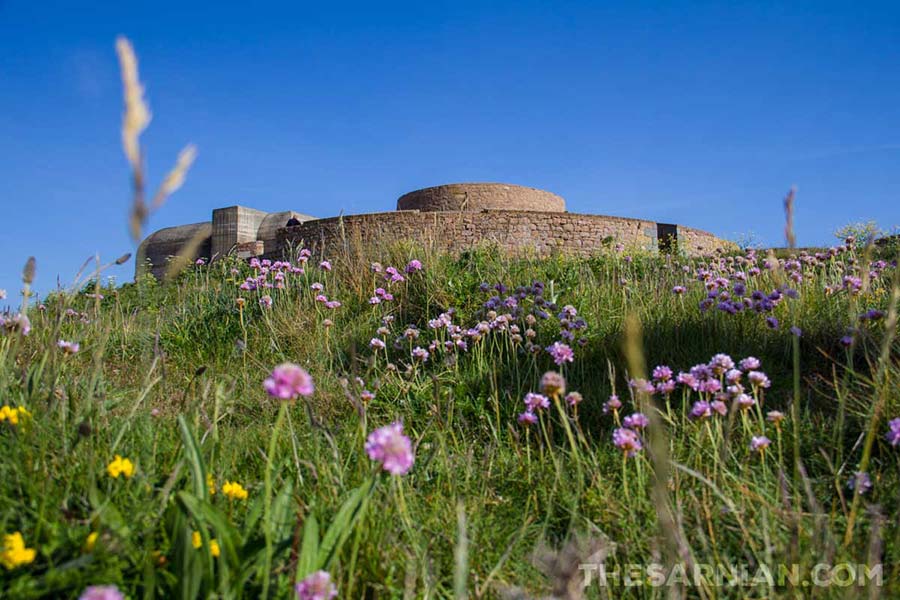Fort Hommet

Fort Hommet is a largely Victorian fortress to which the German occupying forces made their own additions during the Second World War. The German modifications consisted of four casemates housing 105mm K331(f) guns.
At low tide the Hommet is surrounded by rocks on the seaward side, balancing out the heathland between the fortress itself and the main part of the island. Not surprisingly, therefore, its name is derived from the Guernesiais word houmet, for peninsula, by which it is still known.
The original was built in the very early 1800s as a defence against the French during the Napoleonic Wars (although there is evidence of construction on the site dating back to the 1680s). Despite the later German additions (see below) it’s still easy to see that the central tower, used as a keep, and the circular battery around it is very similar in design to the larger Fort Grey, which sits close to Portelet Harbour.
Fort Hommet was upgraded and enlarged in the Victorian era, and 68-pounder guns were installed.

During the German occupation, four casemates (out of a total of 21 built on Guernsey) were added to house guns as part of the Atlantic Wall, which involved making the Channel Islands a supposedly impregnable fortress. The German additions were completed very quickly by building an outline of the structure using wooden shutters, into which concrete was poured. The imprint of these shutters is still visible in some parts. Once the concrete had set, the wood was removed.
The whole area surrounding the expanded bunker system was designated a strongpoint by the occupying forces, which they called Stutzpunk Rotenstein. Thus, alongside the guns house in the casemates, there were rolls of barbed wire, trenches, machine gun pits and flamethrowers. The headland to the north of the bunkers was turned into a minefield, with around 1500 mines in position.
The image below shows the view from inside one of the gun emplacements.

Following the Channel Islands’ liberation, some effort was made to return the islands’ to their pre-war appearance, and the German portion of the extended Houmet, along with many ofter similar casemates around the island, were buried. However, in 1995, to mark the fiftieth anniversary of the liberation, these parts were uncovered again and restored, as they were deemed to be among those in the best condition to be found on Guernsey.
Although there would have been nine bunks in each casemate during the war, it would usually have had a staff of four or five, plus an officer when being used for defence.

It is open for visits on Tuesday and Saturday afternoons through the summer. Away from the fortification, the area is a popular walking spot, and a good site for spotting birds.
The Hommet shouldn’t be confused with Les Houmets, which are small islands to the north east of the island – the opposite side to the Hommet.
Fort Hommet in context
Fort Hommet in brief
Although there is evidence of fortifications having stood on this spot since the early 1600s, the bulk of the Houmet was built during the Victorian era to protect against invasion by the French during the Napoleonic wars. When the German forces occupied the Channel Islands during the Second World War, it was bolstered with the addition of four casemates that housed 10.5cm guns.
See also...
Island off the coast of Guernsey
Fortress, now a shipwreck museum
Former Garrison south of Town
Shallow sandy beach to the north
Tiny island off the coast of Jethou

FREE Guernsey newsletter
Don't miss our weekly update on Guernsey's fascinating history. We promise never to sell your data to anyone else, and there's a super-easy unsubscribe link on the bottom of each email so you can leave whenever you want.








